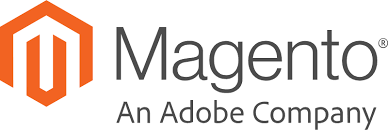Magento Open Source is a robust and flexible ecommerce platform that has gained significant popularity among businesses of all sizes, including enterprises. Its open-source nature, extensive customization options, and strong community support make it an attractive choice for organizations seeking to build and manage complex online stores.
White Paper: Enterprise Ecommerce Development with Magento Open Source
Introduction
Magento Open Source is a robust and highly flexible ecommerce platform that has become a preferred solution for businesses of all sizes, including large enterprises. Its open-source architecture, deep customization capabilities, and vibrant community support make it ideal for building scalable and feature-rich online stores.
This white paper presents a comprehensive guide to enterprise ecommerce development using Magento Open Source. It includes an overview of Magento's advantages, a step-by-step development process, strategic use cases, best practices, a SWOT analysis, and how KeenComputer.com and IAS-Research.com can support organizations in achieving successful digital commerce implementations.
Key Advantages of Magento Open Source for Enterprise Ecommerce
- Scalability
- Supports thousands of products and SKUs.
- Handles high traffic volumes and concurrent users.
- Flexibility and Customization
- Custom modules and themes.
- Support for multiple storefronts and languages.
- Rich Feature Set
- Inventory management, promotions, reporting, and mobile-optimized designs.
- Integration with ERP, CRM, and PIM systems.
- Community and Ecosystem
- Thousands of extensions and themes.
- A large developer and user community for peer support.
- Cost-Effective
- No licensing fee; budget-friendly compared to proprietary platforms.
Enterprise Ecommerce Development Process with Magento Open Source
- Planning and Strategy
- Define business goals, personas, and key performance indicators (KPIs).
- Analyze competitors, market gaps, and technology stack requirements.
- Platform Selection and Customization
- Choose Magento Open Source for maximum control.
- Customize UI/UX with responsive themes and extensions.
- Product Catalog and Inventory Management
- Implement automation for SKU management.
- Enable advanced filtering and navigation features.
- Payment, Shipping, and Tax Integration
- Integrate with global payment gateways (e.g., Stripe, PayPal).
- Automate shipping rules, tax calculations, and address validation.
- Marketing, Analytics, and SEO
- Leverage Google Analytics, SEMrush, and Magento SEO tools.
- Create targeted campaigns and optimize content for search.
- Testing and Go-Live
- Perform functional, regression, and performance testing.
- Implement staging environments and CI/CD workflows.
- Ongoing Maintenance and Optimization
- Patch management, backups, and performance tuning.
- A/B testing and conversion rate optimization (CRO).
Use Cases
- Global B2C Marketplace Launch
- A consumer electronics enterprise needed a multi-lingual, multi-currency storefront.
- Magento's flexibility enabled regionalized catalogs and promotions.
- B2B Wholesale Distribution
- An industrial parts supplier required tiered pricing, quotes, and custom catalogs.
- Magento B2B modules delivered tailored customer experiences.
- Direct-to-Consumer (D2C) Brand Expansion
- A manufacturer transitioned to D2C, integrating Magento with their ERP and logistics.
- Increased margins and customer insights through first-party sales.
- Ecommerce Replatforming from Legacy Systems
- A fashion retailer moved from a legacy CMS to Magento for modern design and integrations.
- Enhanced performance, SEO, and mobile conversions.
SWOT Analysis: Magento Open Source for Enterprise Ecommerce
|
Strengths |
Weaknesses |
|---|---|
|
Highly customizable and scalable |
Requires technical expertise |
|
Strong community and extension ecosystem |
Complex initial setup and learning curve |
|
Open-source and cost-effective |
Limited out-of-box B2B tools (extendable) |
|
Supports global commerce (multi-site, multi-currency) |
Performance tuning may require third-party solutions |
|
Opportunities |
Threats |
|---|---|
|
Integrating AI for personalization |
Security vulnerabilities if not maintained |
|
Headless commerce and PWA capabilities |
Competition from SaaS platforms like Shopify Plus |
|
Expansion into new geographies |
Cost of ongoing custom development |
How KeenComputer.com Can Help
Keen Computer Solutions offers tailored Magento Open Source development services for enterprises. Key services include:
- Full-stack Magento development and theme customization
- Secure hosting, DevOps, and CI/CD integration
- Migration from legacy systems to Magento
- Advanced SEO, analytics, and CRO integration
- 24/7 support, maintenance, and scalability engineering
How IAS-Research.com Can Contribute
IAS Research provides research-driven ecommerce innovation services, helping enterprises align technology with strategic goals:
- Ecommerce strategy consulting and market analysis
- AI-driven personalization and product recommendations
- R&D for headless commerce and API-first architecture
- Integration with enterprise IT infrastructure (ERP, CRM, PIM)
Best Practices for Magento Open Source Enterprise Development
- Plan for Growth: Design for scalability from the start.
- Invest in UX: Focus on user journeys, accessibility, and responsive design.
- Prioritize Security: Apply patches, use secure hosting, and implement SSL, firewalls, and WAF.
- Optimize Continuously: Use analytics to refine features and performance.
- Train Internal Teams: Enable internal ownership through training and documentation.
Conclusion
Magento Open Source empowers enterprises with a customizable, scalable, and cost-effective ecommerce solution. With the right planning, execution, and partners like KeenComputer.com and IAS-Research.com, organizations can deliver superior digital commerce experiences that drive growth, engagement, and customer satisfaction.
References
- Magento Documentation: https://devdocs.magento.com/
- Magento Community Forums: https://community.magento.com/
- Magento Marketplace: https://commercemarketplace.adobe.com/
- MageMojo: https://docs.webscale.com/stratus-hosting-support/magemojo-customer-accounts/
- Cloudways: https://www.cloudways.com/en/
- Google Analytics: https://marketingplatform.google.com/about/analytics/
- SEMrush: https://www.semrush.com/
- Moz: https://moz.com/
- Shopify: https://www.shopify.com/
- BigCommerce: https://www.bigcommerce.com/
- WooCommerce: https://wordpress.com/support/introduction-to-woocommerce/
Contact Information
For enterprise ecommerce solutions, contact:
- KeenComputer.com – Expert Magento Development and Digital Transformation
- IAS-Research.com – Strategic Research and Innovation for Ecommerce Systems
